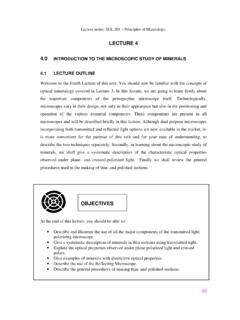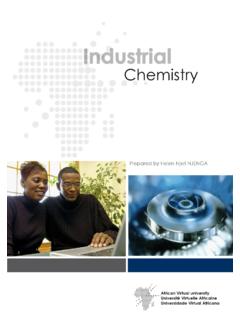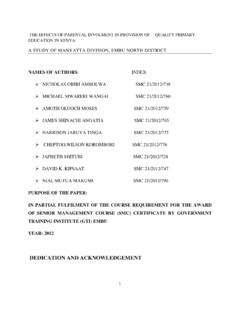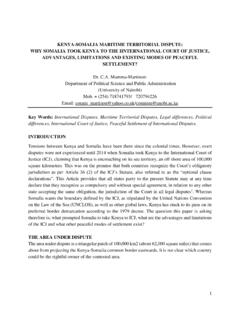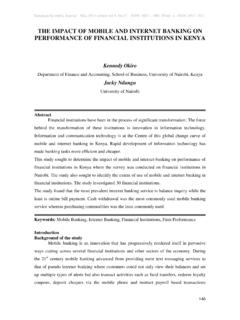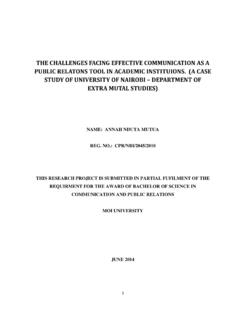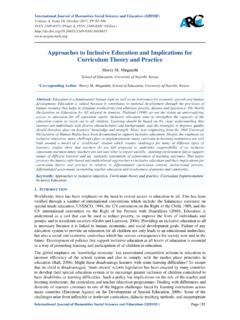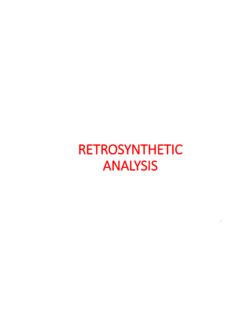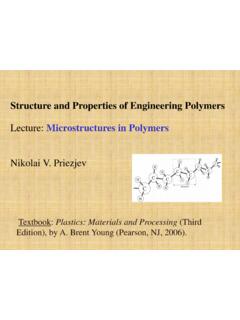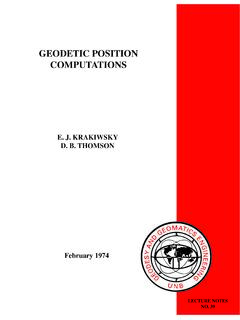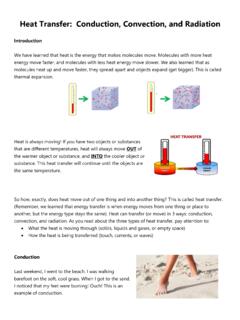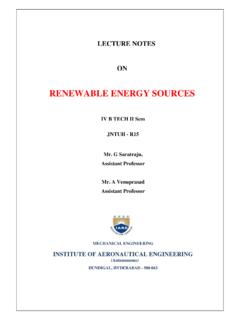Transcription of LECTURE 1 MINERALOGY AND CRYSTALLOGRAPHY
1 LECTURE Series: SGL 201 Principles of MINERALOGY 1 LECTURE 1 MINERALOGY AND CRYSTALLOGRAPHY LECTURE OUTLINE Welcome to LECTURE 1 of this unit. Congratulations for having covered successfully the first year prerequisite unit in Geology, namely: SGL 101: Materials of the Earth . In order for you to grasp fully the contents of the present LECTURE , you are particularly encouraged to make a review of the SGL 101 topic Principles of Elementary MINERALOGY and CRYSTALLOGRAPHY . At this level, you are now ready to be introduced to more advanced knowledge in the subject matter through this unit entitled Principles of MINERALOGY .
2 As the unit title suggests, we shall begin the LECTURE by asking ourselves the all-important question What is MINERALOGY ? MINERALOGY is basically the science of minerals, which includes their CRYSTALLOGRAPHY , chemical composition, physical properties, genesis, their identification and their classification. You will be interested to know that MINERALOGY is closely allied to mathematics (especially geometry), chemistry and physics. MINERALOGY is a fundamental part of the science of geology and other closely related subjects such as agronomy, ceramic engineering, medical science, and metallurgy.
3 In this LECTURE we shall review the definition of a mineral, the historical perspective of MINERALOGY , its importance in science and application in society, and a more in-depth study of a mineral s crystallographic symmetry elements. By the end of this LECTURE , you should be able to: Give the definition of a mineral from the historical, legalistic to scientific perspective. Review the historical perspective of the science of MINERALOGY . Describe the importance of MINERALOGY and its application to other related fields of scientific and technological endeavor. Describe various elements of CRYSTALLOGRAPHY in terms of crystal structure, classification, and symmetry in crystals.
4 State the Law of Constancy of interfacial angles in crystals and how to measure those angles using a goniometer. Describe twinning in crystals. OBJECTIVES LECTURE Series: SGL 201 Principles of MINERALOGY WHAT IS A MINERAL? The definition of the term mineral range from the historical perspective (any material that is neither animal nor vegetable) through the legalistic perspective (something valuable that may be extracted from the earth and is subject to depletion) to the scientific perspective (a naturally occurring solid, generally formed by inorganic processes with an ordered internal arrangement of atoms and a chemical composition and physical properties that are either fixed or that vary within some definite range).
5 HISTORICAL PERSPECTIVE OF MINERALOGY Prehistoric uses of rocks and minerals predate the written language. The evidence of such prehistoric uses include the following: the red and black mineral pigments (hematite and pyrolusite) that were used in cave paintings and the diverse hard or tough minerals and rocks ( , jade, flint, and obsidian) that were shaped into tools and weapons. In Kenya, such prehistoric tools dating 500,000 years have been located at an archaeological site within the Rift valley, at Olorgesaille, in Narok district. In addition, mining and smelting of metallic minerals to produce gold, silver, iron, copper, lead, and bronze are also known to have predated written records.
6 The written records are considered to have began with the philosopher Aristotle (384-322 BC) who in his book (Meteorologica) included a section about stones (minerals, metals and fossils). Theophrastus (ca. 372-287 BC), who was a pupil of Aristotle, prepared a book dealing with the substances of the mineral kingdom. A major milestone in the development of MINERALOGY was provided by the Danish scientist Niels Stensen, better known by the Latinized version of his name, Nicolaus Steno. In 1669, Steno showed that the interfacial angles of quartz crystals are constant, no matter what the shape and size of the crystals.
7 This discovery drew attention to the significance of crystal form and ultimately led to the development of the science of CRYSTALLOGRAPHY . Robert Boyle, an English philosopher (1627 1691), was the first to refer to the word MINERALOGY whose origin was centered on Celtic civilization. Warner , a German LECTURE Series: SGL 201 Principles of MINERALOGY 3professor (1750-1817), made a noteworthy contribution in standardizing the nomenclature and description of minerals. James D. Dana (1813 1895) articulated a feasible classification of minerals based on the chemistry that had previously been proposed by Bezzelius (1779-1848).
8 Although the microscope was used to study minerals early in the 19th century, it was not until after 1828, when the British physicist William Nicole (1768-1828) invented the polarizer that optical MINERALOGY took its place as a major investigative procedure in MINERALOGY . The first great development in the 20th century came as a result of experiments made to determine how crystals can affect X-rays. Presently, X-rays and electron microscopes are in use as a result of experiments advanced by Bragg (1890 1971). In the recent past, the advances made in the introduction and widespread use of electron microscopes, X-ray diffractometers, and other sophisticated instruments and procedures ( , Mossbauer and infrared spectrometry), aid in the determination of certain characteristics of minerals and other crystalline materials.
9 IMPORTANCE OF MINERALOGY Minerals and consequently MINERALOGY are extremely important to economics, aesthetics and science. Economically, the utilization of minerals is necessary if we have to maintain the current standard of living. Aesthetically, minerals shine as gems, enriching our lives with their inherent beauty, especially as we view them in museum displays. Gems in jewelry, crown-jewel collections, and other displays attract the attention of millions of people annually. As you may be aware, museums do more, however, than just displaying outstanding gems and mineral specimens.
10 They also have assumed the function of collecting and preserving mineral specimens for posterity. Although a few minerals are common, many occur at only a few localities, and some occur within only a single (a) Give three examples of some of the prehistoric uses of minerals and rocks. (b) Review the historical perspective of the science of MINERALOGY up to the 21st Century. LECTURE Series: SGL 201 Principles of MINERALOGY 4deposit. Therefore, whenever possible, originally described specimens and other noteworthy specimens need to be preserved. Scientifically, minerals comprise the data bank from which we can learn about our physical earth and its constituent materials.
